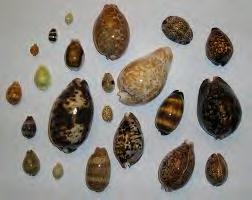Lesson 1 1-2weeks
A. Traditional societies
• Over 100 000 years ago, people provided for their own needs.
• They were self-sufficient and lived on whatever was provided by nature.
• Examples of people who lived self-sufficient lives were the hunter-gatherers in South Africa, the Twa in Zaire, the Inuit in Alaska and the Aborigines in Australia.
• They lived on meat from the wild animals and the food from plants.
• This is called hunting and gathering.
• They used everything they produced.
• They had a limited range of goods and services available.
• The community used basic methods to hunt and harvest foods.
• They lacked technology, so most of their activities revolved around people producing all the things that they needed, to survive.
• This is called a SUBSISTENCE ECONOMY.
• Most modern societies use coins, notes and debit or credit cards to pay for goods or services.
• A modern society is an Industrialized society that uses technology to produce goods for trade.
• People have specialized skills and have to rely on other people to produce goods and provide services that they cannot make or provide.
Lesson 2 3-4 weeks
Lesson 2 3-4 weeks
Bartering
While hunting and gathering means that people provided for their own needs, hunters were gradually able to tame and keep their animals. This led to herding. Herders moved from place to place to find food and water animals and themselves. They kept cattle and goats and would rather live off the goats’ milk than kill them.
Animals were only killed when there was not enough wild meat to eat. Herders moved in larger groups from place to place. As groups met each other, they exchanged goods.
As societies developed and started to travel, people started to specialize in the production of specific goods and foods. They realized that people in other areas had items they needed or wanted.
A system of trade developed, whereby personal possessions of value could be exchanged for other goods. This kind of exchange dates back to 9000-6000 BC and is called bartering, and is still in use today. The first people didn't buy goods from other people with money. They bartered with each other.


Disadvantages of bartering:
1. It was not always practical.
2. It was difficult to find what you wanted or needed.
3. Goods were difficult to carry or to transport.
4. There is no common measure of value.
5. Certain goods can’t be divided into smaller units.
6. No late payments can be allowed.
7. Storing goods is difficult.
8. It was difficult to work out the real value of the items because people attached different values to different items.
Lesson 3 5-6 weeks
Promissory notes
This means a written and signed promise to pay a sum of money.
This means a written and signed promise to pay a sum of money.
Payer:
Somebody who pays somebody.
Payee:
Somebody to whom money is paid or owed to.
examples of promissory notes are as follows:
A
promissory note must include:
• The term “Promissory Note”.
• The amount that the note is worth.
• Interest that will be added.
• When the payment has to be made.
• The place where payment is to be
made.
• Name of the Payee.
• Payer’s signature.
• Terms of repayment.
• Date
until when the promissory note is valid.
Lesson 4 7-8 weeks
The first evidence of a type of money was cowry shells. They were used in 1200 BC in China. In 1000 BC, China produced imitation cowry shells this can be thought of as the original development of coins. In about 500 BC, pieces of silver were the earliest coins.

The history of coins and paper money
Early forms of money

These coins were first used in Lydia (Turkey). In 118 BC, leather banknotes were used in China.




Coins and paper money
1. 9000BCE
Barter with livestock and crops.
2. 1200BCE
Cowrie shells used as money in China.
Most widely and longest used currency in history.
3. 1000BCE
“Money” made from metals, such as copper. They often had holes in the centre, so they could be strung together, for safe-keeping.
4. 700BCE
Coins made from precious metals such as silver, bronze and gold. Coins were valued according to size and weight.
Later, coins were stamped with its value, so there was no need to weigh them.
5. 800CE
Paper currency appeared in China.
6. 1950CE
Credit cards were issued, and used in the USA.
7. Today
Internet banking, ATMs used.
Lesson 5 9-10 weeks
Electronic Banking
Electronic Banking
Advantages
and disadvantages of using the Internet for banking and buying.
|
|
||
|
|
||
|
|
||
|
|
||
|
|
||
|
|
The role of money
• It is a medium of exchange – use it to buy goods and services.
• Unit of account – standard measure of how much goods and services are worth.
• Store of value – it holds its value over time.
Security
features on a South African
• Watermark within the paper
• Security thread running through the
paper.
• High quality paper
• Print
quality
When
people started trading goods for money, they gathered in certain areas to make
it easier for buyers and sellers to meet. This is called Urbanization.
Consumer
Economy
An
economy where businesses encourage consumers to spend as much money as possible
on their goods or services is called a Consumer Economy.
•
Consumer spending puts a lot of pressure on the environment.
•
Businesses use raw materials to produce goods.
•
Sometimes these raw materials run out.
• We need to concentrate on sustainable
resources that can be “re-generated” again.







No comments:
Post a Comment